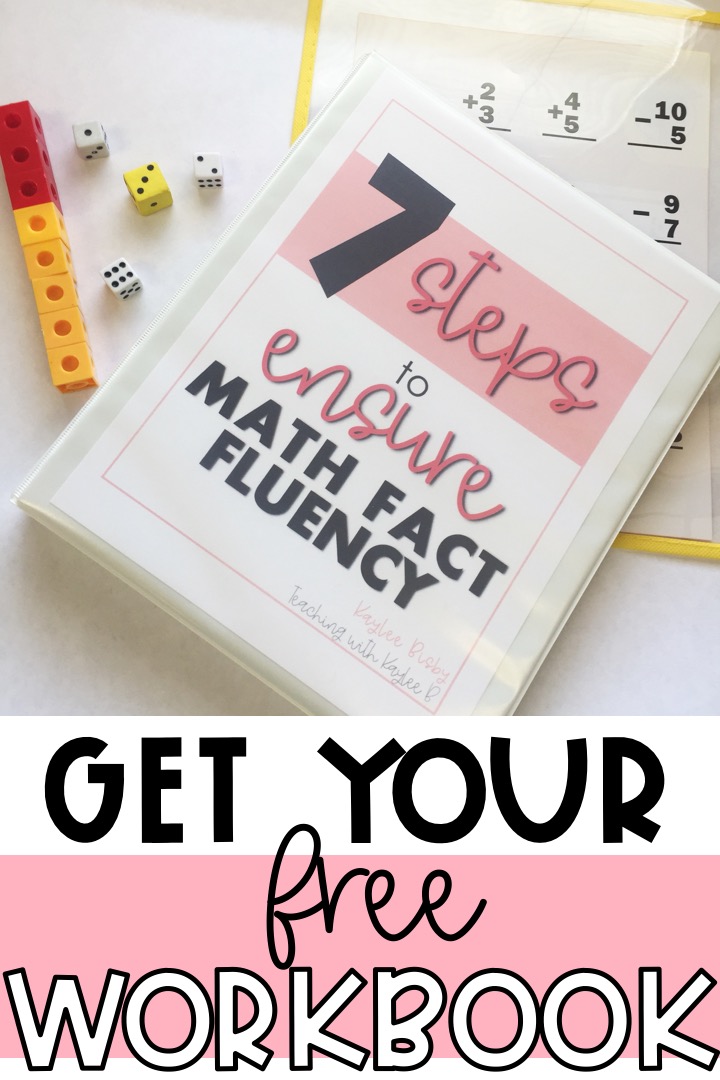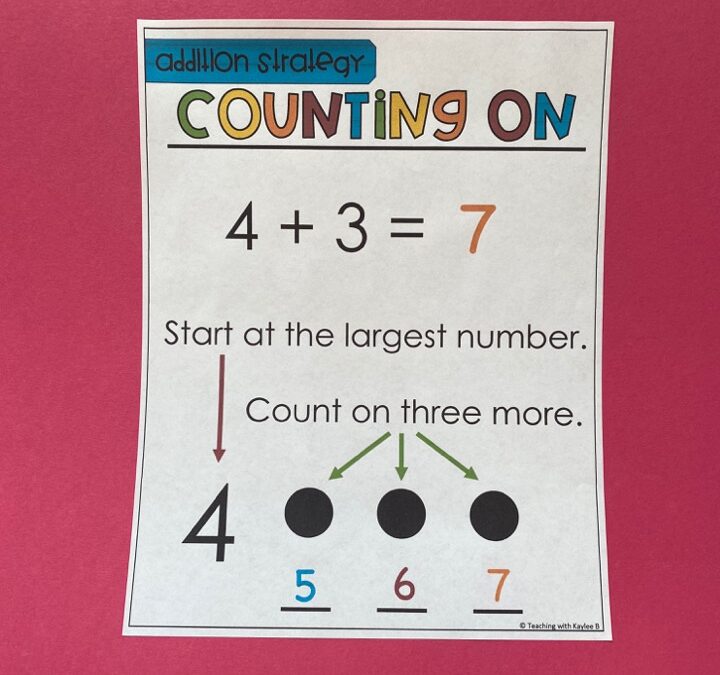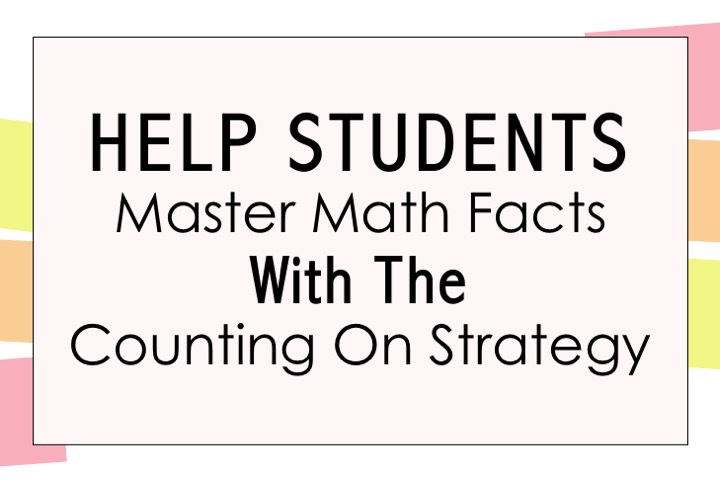
Using the counting on strategy is a key step for students to move to math fact mastery. Students first need to use counting strategies. As they become more fluent with counting strategies, they will begin to use reasoning strategies. When students use reasoning strategies, they show they are well on their way to math fact mastery. So using counting strategies is a crucial step for students to become fluent with math facts.
The best thing about the counting on strategy is that students catch on quickly, and they can easily use it to find the answer to any math fact.
In this blog post, I’m sharing tips on how to teach the counting on addition strategy to your students.
I love to teach math facts strategies to my students because they give students the tools to be successful with addition and subtraction facts. There are actually 7 steps teachers can take to get students to math fact mastery. I’m sharing these actionable steps in a free workbook for 1st and 2nd grade students. Download the free workbook here: The 7 Steps To Ensure Math Fact Fluency
Alright, let’s get started on how to teach the counting on strategy.
Counting On Strategy
I like to show my students the slow way. Let’s use the equation 4+3 as an example. I count out 4 fingers. I count out 3 fingers. Then I count them all together. I emphasize that this takes a long time. If I just counted out 4, why do I need to count that again? I know that it is 4.
Then I show students to group the first number and start there. I tell students to say four and make a fist. Then use the counting on strategy to count on 3. So it goes like this… “4…5,6,7.” The answer to 4+3 is 7.
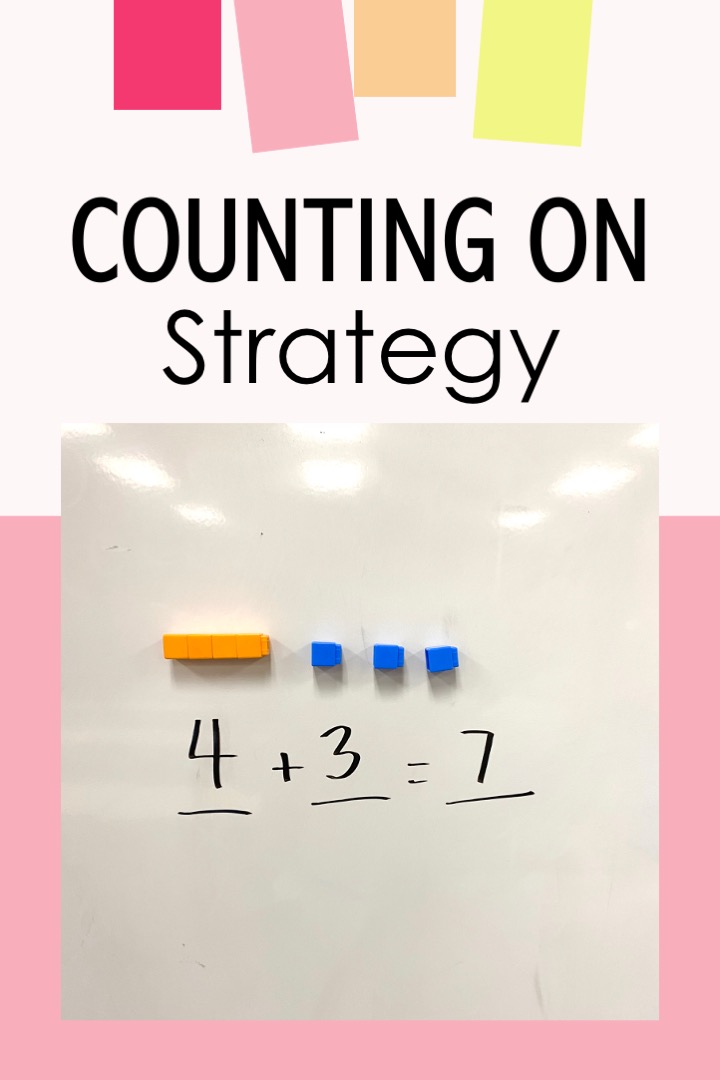
Using visuals is a great way to teach the counting on strategy. Here is how I teach it with blocks.
You can help students see other patterns. Like no matter what number they start at, either 4 or 3, they will get the same answer. They should see the pattern that when they start at the greater number, it will be faster.
Students need lots of practice with the counting on strategy. I have students “punch” the number and count on with me when math facts come up in our regular math lesson. It gets students engaged, moving, and the practice they need with this strategy.
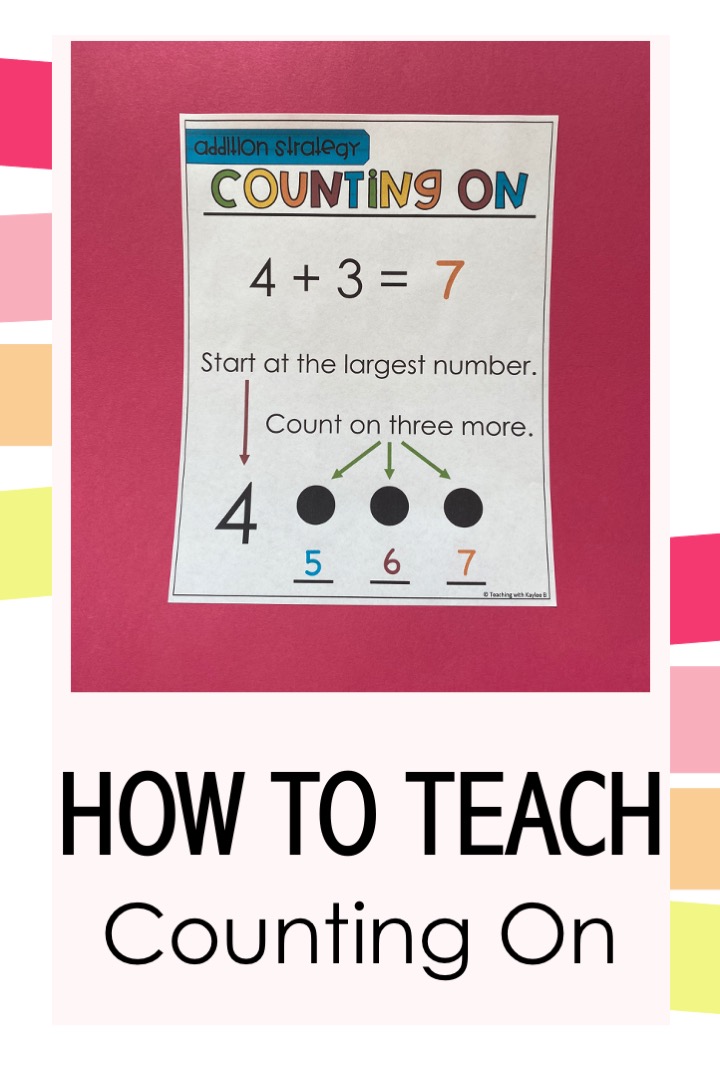
When students are independently practicing the counting on strategy, I like to hang up a poster for students to reference to.
Modeling and practicing with you is great, but students need more independent practice to truly master this strategy. That is why I get them practice with counting on strategy worksheets.
Counting On Strategy Worksheets
Now regular worksheets are not very engaging for students, so I like task cards and scoot activities.
I print off the task cards and laminate them so that students can use dry erase markers on them. I use these as a centers activity. These task cards help students group the first number and then write the numbers as they count on.

I also like to use these as a whole group activity. I put the task cards around the classroom and print off a recording page. Students move around the classroom and record their work and answers on the recording page. This helps keep students accountable. They also love to get out of their seat and move around.
Find these Counting On Strategy Task Cards here.
Find Counting On Strategy for Subtraction Task Cards here.
I also give students practice with Counting On Strategy Boom Cards. This is a digital option for students. I love them because they are interactive for students. Plus, they give students instant feedback, which means no grading for the teacher!

Find this BOOM Cards set here.
I hope you have been able to see the importance of teaching this math fact strategy to your students. For tips on teaching addition and subtraction fact strategies to your students, read this blog post here: Math Fact Strategies That Work
For a step-by-step guide on helping students get to math fact mastery, download my free workbook: The 7 Steps to Ensure Math Fact Fluency
